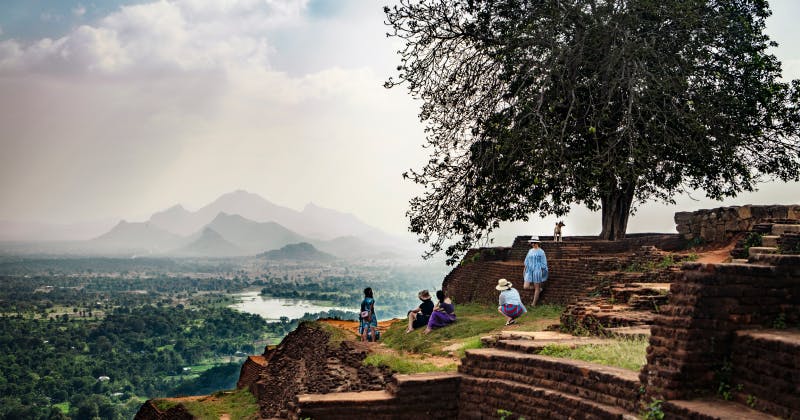

Travel Guides

Inspiration

Tips & Advice

Sri Lanka Airport Transfers

Sri Lanka Car Hire

Sri Lanka Attractions


Sri Lanka Travel Guide
With a tropical climate, miles of beaches and culture and history at every turn, Sri Lanka is a holidaymaker's dream destination.
What you'll find in this guide:
Top things to do in Sri Lanka
Practical Information
Getting to Sri Lanka
Getting around Sri Lanka
Sri Lanka's UNESCO heritage
What to eat in Sri Lanka
Sri Lanka wildlife
-
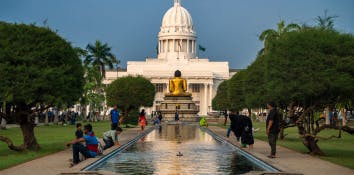
ACTIVITIES
Colombo full-day city tour
Discover how Colombo is like four cities in one on this full-day guided city tour and learn its history through its top sites (and hidden ones too).
-

NATURE
Demodara railway station, Dunhinda Falls, and Nine Arch Bridge
Are you ready for a picturesque mystic journey from witnessing how a train moves through emerald mountains and tunnels to a stunning waterfall?
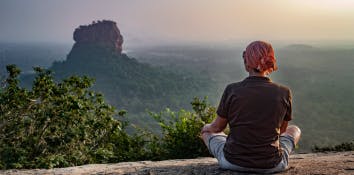
ACTIVITIES
Sigiriya Rock and Dambulla Cave Temple tour
Enjoy a guided walking tour of the Sigiriya Rock Fortress, considered as one of the main attractions of Sri Lanka's Cultural Triangle.
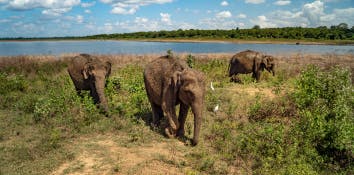
ACTIVITIES
Udawalawe elephant 4x4 safari
If there's one word that defines Sri Lanka, it's 'wild'. And as home to some 500 elephants, Udawalawe National Park is considered the best park to spot them in the country.
You can find more great video content on our YouTube channel
Holiday Extras Travel Guides
What time zone is Sri Lanka in?GMT +5.30
What currency do they use in Sri Lanka?Sri Lankan Rupees LKR
What language do they speak in Sri Lanka?Tamil and Sinhala
What power adaptors do you need for Sri Lanka?Type D & G
What is the average flight time to Sri Lanka?11 Hours
Sri Lanka travel advice
Sri Lanka has been experiencing a severe economic crisis and unrest, though the Foreign, Commonwealth & Development Office (FCDO) aren't currently advising against travel there.
There have been protests and violence in the past year, so Sri Lanka may not be the best destination if you're just after an exotic beach holiday. Seasoned travellers and adventurers should be fine, just make sure you book appropriate travel insurance and follow all the latest advice.
Latest travel adviceSome facts about Sri Lanka
Sri Lanka is roughly the same size as Ireland and sits to the south-east of India. The island boasts impressive safaris, the best cup of tea you'll ever taste, 8 UNESCO World Heritage sites and warm and wonderful weather.
Compared to the rest of South Asia, Sri Lanka ranks highest on the UN's Human Development Index, which essentially means that the quality of life is good - the majority of the population have access to both healthcare and education.
With the history of tea-growing in Sri Lanka it's not surprising that almost 5% of the population work in the billion-dollar tea industry. Ceylon tea is arguably the most familiar from Sri Lanka and is named after the country itself, which changed its name to Sri Lanka in 1972 when it became a republic.
Perhaps more surprisingly, even though cricket is the most popular sport played in Sri Lanka, volleyball is their official national sport.
Practical Info
Culture and etiquette
Religion
The official religion of Sri Lanka is Buddhism, but Hinduism and Islam are commonly practiced as well. Here are some important things to bear in mind…
Posing for pictures with the Buddha is frowned upon because it's custom never to have your back to him, so bear this in mind when taking photos. That's not a 'never take photos' just be mindful about your angles.
Cover any tattoos of the Buddha - The mistreatment of Buddhist images and artefacts is a serious offence and claiming ignorance doesn't fly here. Tourists have been convicted for their disrespect and British nationals have even been refused entry to Sri Lanka or faced deportation for having visible tattoos of Buddha.
If you've been to countries like Thailand, you'll have been told to never point your feet in the direction of Buddha. This is only loosely observed here, though you might occasionally see people sitting in front of Buddhas with their legs neatly tucked under them – so try to be respectful.
When visiting any temples or religious sights, guests must be appropriately dressed – take off your shoes and any headgear and make sure that legs and shoulders are covered. If in doubt, do what the locals do.
Tipping
Do you need tip in Sri Lanka? Culturally it's not expected but if you're feeling generous or received particularly good service, then by all means go ahead.
Smoking
Smoking is banned in most indoor public spaces and public transport, with some exceptions like smoking areas in airports.
Language 101
Sri Lanka has not one, but two official languages to get your head around – Sinhala, which is spoken by roughly three quarters of the population, and Tamil, which is spoken by a large chunk of the remainder.
English is widely spoken and will be used in most public or commercial environments, but here are some phrases to get you started if you want to give the languages a go:
Sinhala
Yes – Ow
No – Naa
Hello/good day – Ayubowan
Thank you – Istuti
Thank you very much – Bohoma istuti
Please – Karunakerara
OK/very good – Hari hondai
I don't understand – Mata terinneh neh
Please stop here – Metana nawaththanna
Where is the station? – Stesemeta eka ko?
What is this? – Mekeh mokadeh?
How much (is this)? – (Meeka) kiyadha?
Do you speak English? Ingirisi dannevada?
Tamil
Hello – Vanakkam
Goodbye – Poyvituvarukiren (then they reply Poyvituvarungal)
Yes – Amam
No – Illai
Thank you – Nandri
What is your name? – Ungal peyar yenna?
My name is (name) – Yen peyar (name)
What is this/that? – Idu/Adu yenna?
What is the price? – Yenna vilai?
I don't understand – Puriyadu
Jabs, visas and other advice
For up-to-date advice on jabs, visas and other foreign advice, we recommend following the government's website
Emergency numbers
118 or 119 for police. 110 for fire or ambulance.
Getting to Sri Lanka
Direct flights are the easiest way to get to Sri Lanka, with an average flight time of around 11 hours.
Depending on the airline, some flights have a stopover usually in Dubai, Qatar or even the Maldives. The main airport for Sri Lanka is the Bandaranaike International Airport and this is found just north of the capital Colombo.
-

Sri Lanka Airport Transfers
Book your Sri Lanka Airport transfers, with prices starting from £2.86 with free cancellations up to 3 days before travel.
-

-
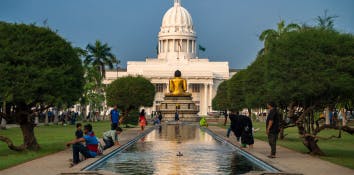
Sri Lanka Ultimate Experiences
From Colombo to Kandy! Make the most of your trip and pre-book the top Sri Lanka experiences before you fly.
-
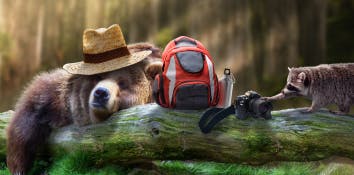
Travel Insurance for Sri Lanka
Whatever you're doing, you'll want a reliable travel insurance policy for your trip to Sri Lanka.
Getting around Sri Lanka
Be prepared before you go and have realistic expectations about what transport in Sri Lanka is like. What you may not get in efficiency, you get back in heaps of character and experience.
In a nutshell, buses are the standard means of travel, trains are good for long-distance travel, cars are for saving time and tuk-tuks are for those short journeys here and there.
Buses
Buses are a standard and fairly reliable mode of transport, albeit a little uncomfortable! The public Sri Lanka Transport Board buses are usually red and surprisingly more enjoyable since the driver isn't compelled to fill it right to the brim like the private white buses. Take anything described as luxury or express with a very generous pinch of salt!
Regardless of bus type, expect to pay between 50 to 100 rupees for around an hour's travel and bear in mind that express buses will probably expect the full route fare, regardless of where you want to get off. Some things to keep in mind:
- You'll need to have cash to hand to buy your tickets - you can buy at the booth or on the bus.
- Timetables only really apply to longer routes or less-popular services. Short or popular routes tend to leave when the bus is full.
- Reserving a seat is pretty much unheard of, so if it's empty, sit down.
- Most signs and timetables do have English versions but where they're in Sinhalese, look for information booths or ask a member of staff.
- Allow plenty of time to get where you need to go!
Trains
Trains are an option for travelling long distances, though they're surprisingly slow. That being said, the views are fabulous! They are pretty basic but are certainly something you should experience.

Carriages and ticket types are divided into three classes. There's not a huge difference between 2nd and 3rd, but the seats in 2nd do have a little more padding, the carriages have fans and are less crowded.
Fares are really cheap. The iconic Ella – Kandy route is LKR 1000 (around £4), travelling 1st class. Tickets can only be purchased on the day of travel. Travelling 1st class won't make a huge dent in even the most stringent of budgets, but don't expect luxury.
Cars
As for cars, hiring a driver to chauffeur you about Sri Lanka is surprisingly affordable and a lot less stressful – plus it's a massive timesaver, which is always a bonus.
The roads themselves are in relatively good condition. You just have to watch out for other drivers, wildlife and throngs of people that make driving a little hair-raising at times.
Tuk-tuks
For a bit more of an adventure you could always haggle for a tuk-tuk (or rickshaw, depending on what you call them) which are ideal for short journeys. Just remember:
- Always agree your price with the driver BEFORE setting off.
- Be prepared to barter a price - you don't have to accept their first offer.
- Be firm about where you want to go
- If you're offered detours or 'quick stops' it's often a bid to get some more money out of you, so don't be fooled.
 107th
107thSri Lanka ranks 107th on the Good Trip Index
This score is calculated based on Sustainability, Human Rights, Women's Rights, Press Freedom, Quality of Life, LGBTQI+ Rights and Animal welfare
Find out moreSri Lanka's 8 UNESCO World Heritage Sites
For a relatively small island Sri Lanka certainly punches above it's weight for UNESCO World Hertiage Sites - boasting a whopping 8 different sites.
Ancient City of Polonnaruwa
Polonnaruwa is divided in to two parts - the new and the old - and it's the old town which is made up of the ancient ruins of the royal city. The site itself is absolutely massive, so hire a tuk-tuk driver to take you from place to place or do your bit for the environment and hire a bike.
Ancient City of Sigiriya
Sigriya is ancient rock fortress carved from the bedrock of a mountain - and it is also known as Lion Rock due to the massive pair of paws that were carved into the rock as the gateway to the palace at the top. One of Sri Lanka's most popular tourist sites, you can climb the 1,202 steps to the top of this outcrop to reacht the fortress at the top.
The ancient city of Sigiriya can be found near another UNESCO site, Drambulla, so it makes it convenient to visit both whilst you are in the area.
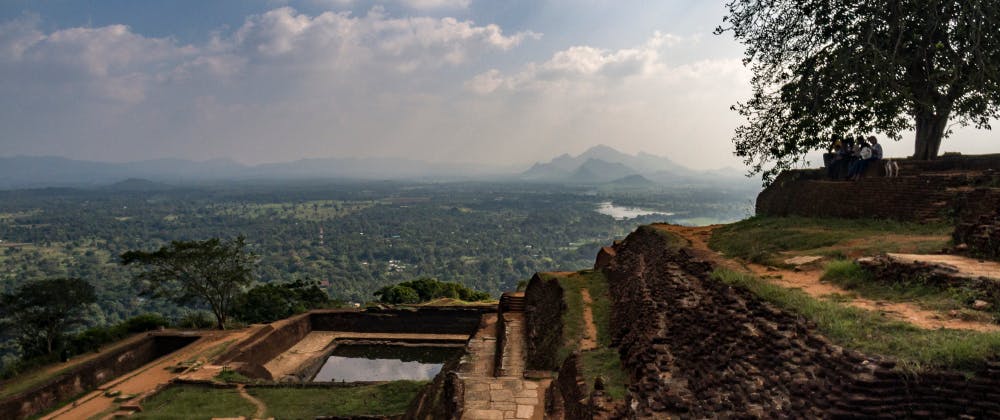
Sacred City of Anuradhapura
The largest of the ancient sites of Sri Lanka, Anuradhapura is the site of the Ruvanvelisaya Dagoba and impressive white dome like structure guarded by over 300 elephant statues.
It is also the home of a holy fig tree - believed to be a descendant of the tree under which the founder of Buddhism was enlightened.
Old Town of Galle and its fortifications
The fort was initially built by the Portuguese in 1588 when they colonised the island. Some years later, it was taken by the Sinhalese, only for the Dutch come in 1640 and pinch it back from them. The Dutch went on to build churches, organise sewage systems, establish a port for trade and make further fortifications to the fort. Come 1796 and enter the British, who took not only the fort but pretty much the entire island and kept it until the mid-twentieth century.
Today you can have a walk about the ruins, admire the panoramic views of the ocean and check out the nearby town for shops and restaurants.
Our tip: You can get around the site pretty quickly, so go early and don't expect to be out all day if you're staying nearby. Spend the rest of the day at the beach.
Sacred city of Kandy
Kandy is a great place to visit - it's busy and has plenty going on in terms of food and culture. The city has some interesting history surrounding its most famous temple, which certainly makes a stopover worth it.
Sri Dalada Maligawa or The Temple of the Sacred Tooth Relic is a sacred temple that houses a tooth that belonged to the Buddha. Legend says that the Buddha died in India, 543 BC and after the cremation of his body, one of his disciples retrieved his left canine tooth and gave it the King. Over the years, people believed that those in possession of the tooth had divine right to rule the land. The tooth was eventually smuggled to Sri Lanka and had many homes until it came here to Kandy, the former capital.
You won't actually see the tooth when you go but the entire place gets crowded, so expect both tourists and worshippers. Make sure you wear clothes that cover your legs and your shoulders, and remove your shoes.
Sinharaja Forest Reserve
Sinharaja is the countries largest remaining tropical rainforest and it is an important biodiversity hotspots. It's believed around 60% of the tree here are endemic to Sri Lanka and it's also home to around 50% of Sri Lanka's endemic animal species.
If you're lucky you may spot: leopard, Indian elephants, purple-faced Langur, the Sri Lanka wood pigeon, green-billed Coucal, Sri Lanka white-headed starling, Sri Lanka blue magpie, ashy-headed babbler and Sri Lanka broad-billed roller.
Rangiri Dambulla cave temple
Added to the list in 1991 The Golden Temple of Dambulla is not just one temple it is in fact a series of cave temples which are filled with around 150 Buddha statues.
Be warned it can be a hot 15-minute walk up to the temples from the entrance - but luckily you'll likely be distracted by the many monkeys that hang out along the paths.
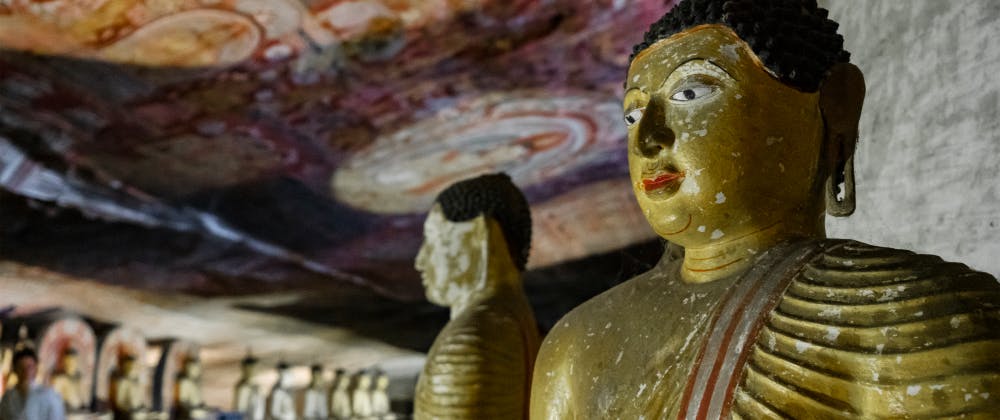
Central Highlands of Sri Lanka
Another biodiversity hotspot the central highlands are made up of the Peak Wilderness Protected Area, the Horton Plains National Park and the Knuckles Conservation Forest. These areas are recognised as being the most undisturbed submontane and montane rain forests in Sri Lanka - and you'll find a number of endemic species of flora and fauna.
Top
What to eat in Sri Lanka
You'd be forgiven for assuming that Sri Lankan food is a staple of rice and curry, because, well, it is. But really, it's more than that – it's a fusion of local produce, imports from neighbouring India, and colonial influence from the Dutch, the British and the Portuguese.
A key feature of Sri Lankan food is its versatility. The core spices and ingredients that make up Sri Lanka curry are always the same; coconut shavings and/or milk, turmeric, chilli, curry leaves and/or powder, garlic and cumin. But they're used in a variety of different ways that mean no two dishes are ever the same.
Buddhism and Hinduism have heavily influenced the cooking style here, meaning that you'll find a lot of veggie dishes. Beef isn't as common as chicken or fish, which is extremely popular. Expect jackfruit, which vegans have been raving about since everyone else clocked onto avocados.
King coconuts are as refreshing as they are popular. While fresh fruit juices and smoothies are also widely available. The fruit is genuinely delicious, so make sure when ordering fresh juices that they're not topped up with water (unless it's bottled).
In Sri Lanka it's customary to eat with your fingers, but knives and forks are widely available. Custom states you eat with your right hand, but it's not taboo if you're a lefty - just tuck in.
Another thing we liked – without sounding like a typical Brits abroad – Sri Lanka is one of the only countries outside of home where you should definitely drink the tea because it's exceptional.
Lastly, bear in mind that alcohol and meat are not usually available on religious holidays and that you can be fined if you ignore instructions about not drinking or smoking in certain public areas.
What Wildlife can you see in Sri Lanka?
Sri Lanka has an amazing amount of endemic species as is common with island nations - it's one of the world's top spots for biodiversity. In our opinion, Sri Lanka has one of the best safari experiences outside of Africa - Uda Walawe National Park alone has around 210 different species. Here are some of the top animals to spot on your holiday:
Elephants
Many people travel to Sri Lanka to get up close with the elephants and though there are a number of sanctuaries you can see them at if you want to spot them in the wild you need to head to Udawalawe or Minneriya National Park. Tours can be easily arranged through your hotel, but you can do it at the park on the day as well.
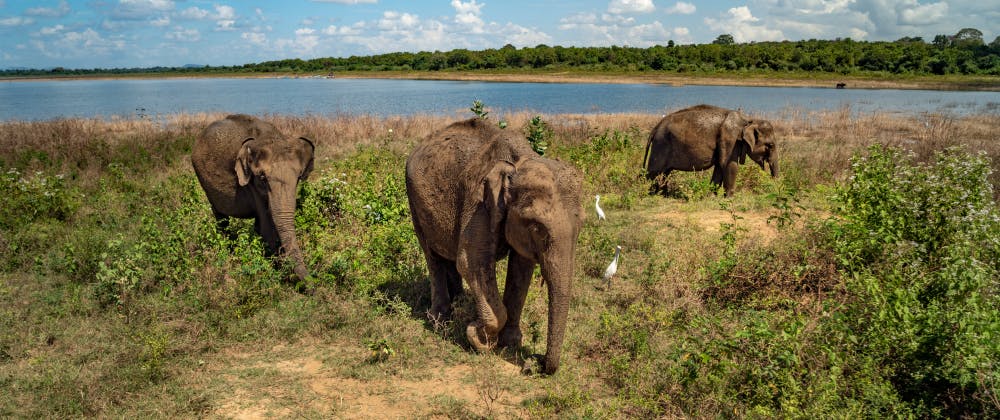
Leopards
These are incredibly shy and elusive animals so don't be disappointed if you don't manage to spot one. The leopards in Sri Lanka don't have the same level of competition as they do in Africa, so they are much bigger - if you want to try see one then head to Yala National park.
Turtles
There are 5 different species of turtle in Sri Lanka - leatherback, Olive Ridley, loggerhead, hawksbill and green. There are a number of conservation projects to help ensure their survival.
Sloth bears
Not to be confused with sloths, sloth bears are a bear species that are unique to the Indian Subcontinent. They eat mostly termites and fruit and if you visit at the right time of year you might be lucky enough to see them carrying a cub on their back.
Top